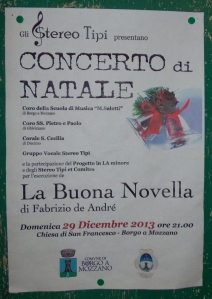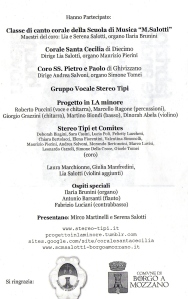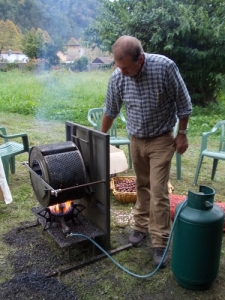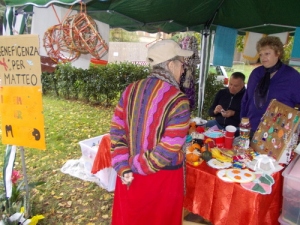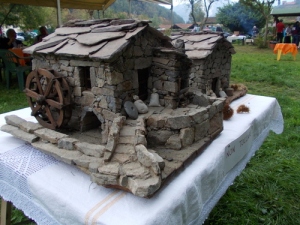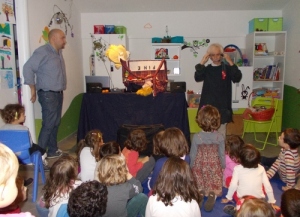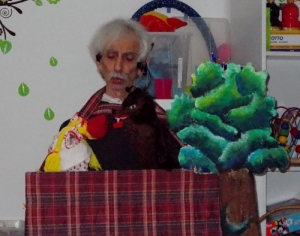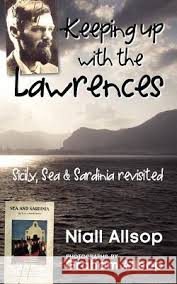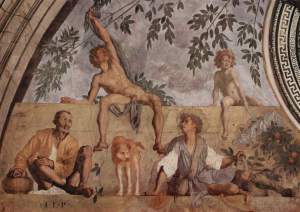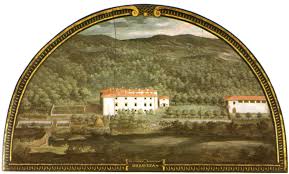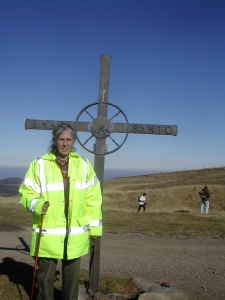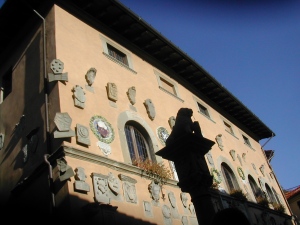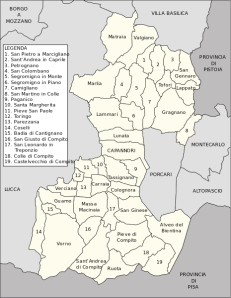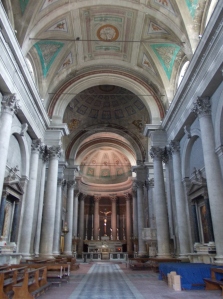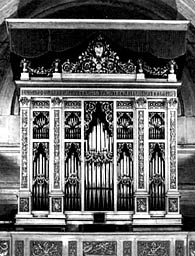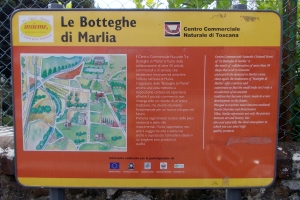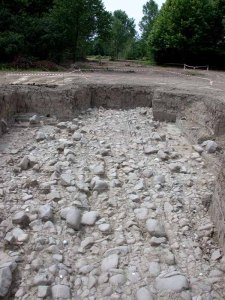Yesterday evening, at the ex-convent of San Francesco of Borgo a Mozzano,there was a Christmas concert,
It was organized and produced by the vocal group “I Stereotipi” with the participation of the scuola civica di musica di Borgo a Mozzano and the “Progetto in la minore”,, took place for the third year running.
Last Christmas the concert was televised on Sky. This year’s event was almost cancelled due to shortage of funds but, very luckily, was reprieved at the last moment.
This was the programme:
Our choir of Saint Peter and Paul of Ghivizzano took part in the evening’s proceedings as it did last year. Our two pieces were composed by Pitoni, the great choral composer of the Roman baroque school, and Bargagna respectively.
Since contemporary composer Bargagna may not be familiar to many people here are some details about him:
Marco Bargagna completed his musical studies at Florence’s “Cherubini” Conservatory, graduating in piano, composition, choral music and choral conducting. He has worked as choirmaster and director in various Italian theatres such as the Arena di Verona , Florence’s Teatro Comunale, the Teatro Comunale di Bologna, Pisa’s Verdi, Lucca’s Giglio etc.
Bargagna’s compositions include three operas, chamber music and a considerable quantity of sacred music, among which are the oratorio “Augustine of Hippo ” three cantatas for chorus and orchestra, twelve Masses and numerous motets. Bargagna has also edited music of the eighteenth century Pisan composers Giovan Carlo Maria Clari and Filippo Maria Gherardeschi. He is currently chief conductor of the choirs at the principal opera theatres in Pisa, Lucca and Livorno.
The evening’s concert opened evocatively with the Stereotipi, singing in candlelight from the organ loft, a beautiful modern composition O Nata Lux by Lauridsen, a mainly choral composer born in Denmark but now living in the USA.
An instrumental ensemble accompanied the S. Cecilia choir from Diecimo conducted by the Borgo a Mozzano’s music school choir director Lia Salotti in Faure’s ravishing Cantique de Jean Racine.
This was followed by Perosi’s Magnificat:
The children from the choral class of the school were great in the Russian carols.
Our choir then concluded the first part of the concert.
The second part was completely taken up by Fabrizio de André’s La Buona Novella. De André is one of Italy’s greatest cantastorie (folk singers) sadly no longer with us. The “Good News” narrates the life of Christ concentrating on his youth and his last journey to Calvary.
The idiom is eclectic introducing traditional folk rhythms and a Capella singing. The performance by an ensemble which included choir, percussion, guitar, flute and keyboard was quite electric and the performance concluded with a heart-felt applause from a captivated audience.
Long may Borgo a Mozzano’s Christmas concert tradition continue! It’s magnificent how small communities in this mountaineous region of Tuscany can get together and produce results which are more than worthy and touch inspirational qualities. My wife and I are truly proud to be able to play a little part in these uplifting events.

